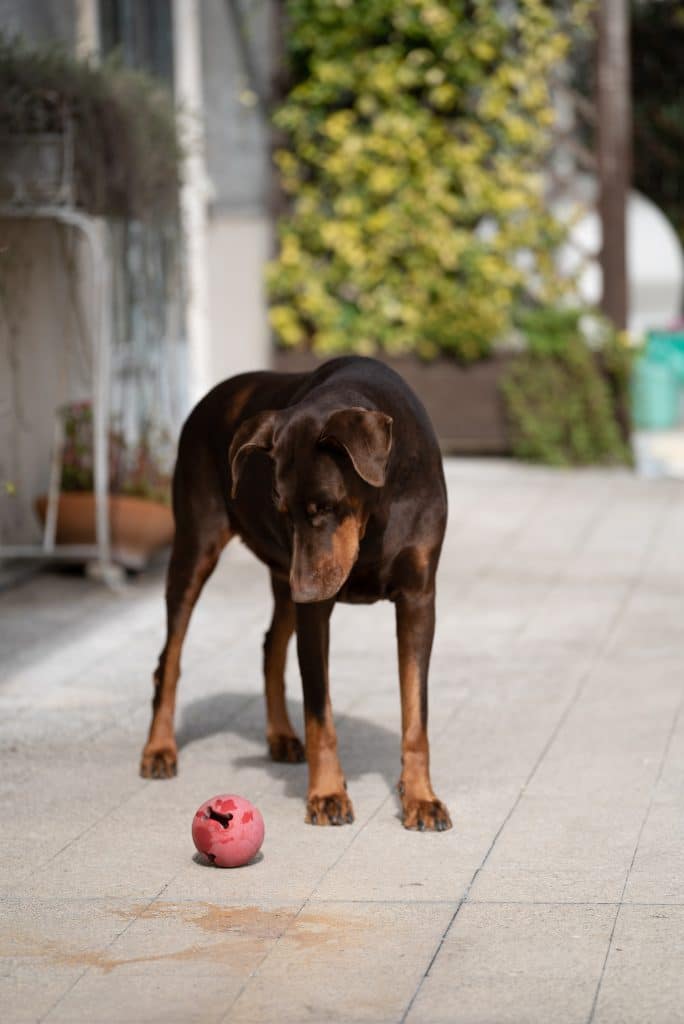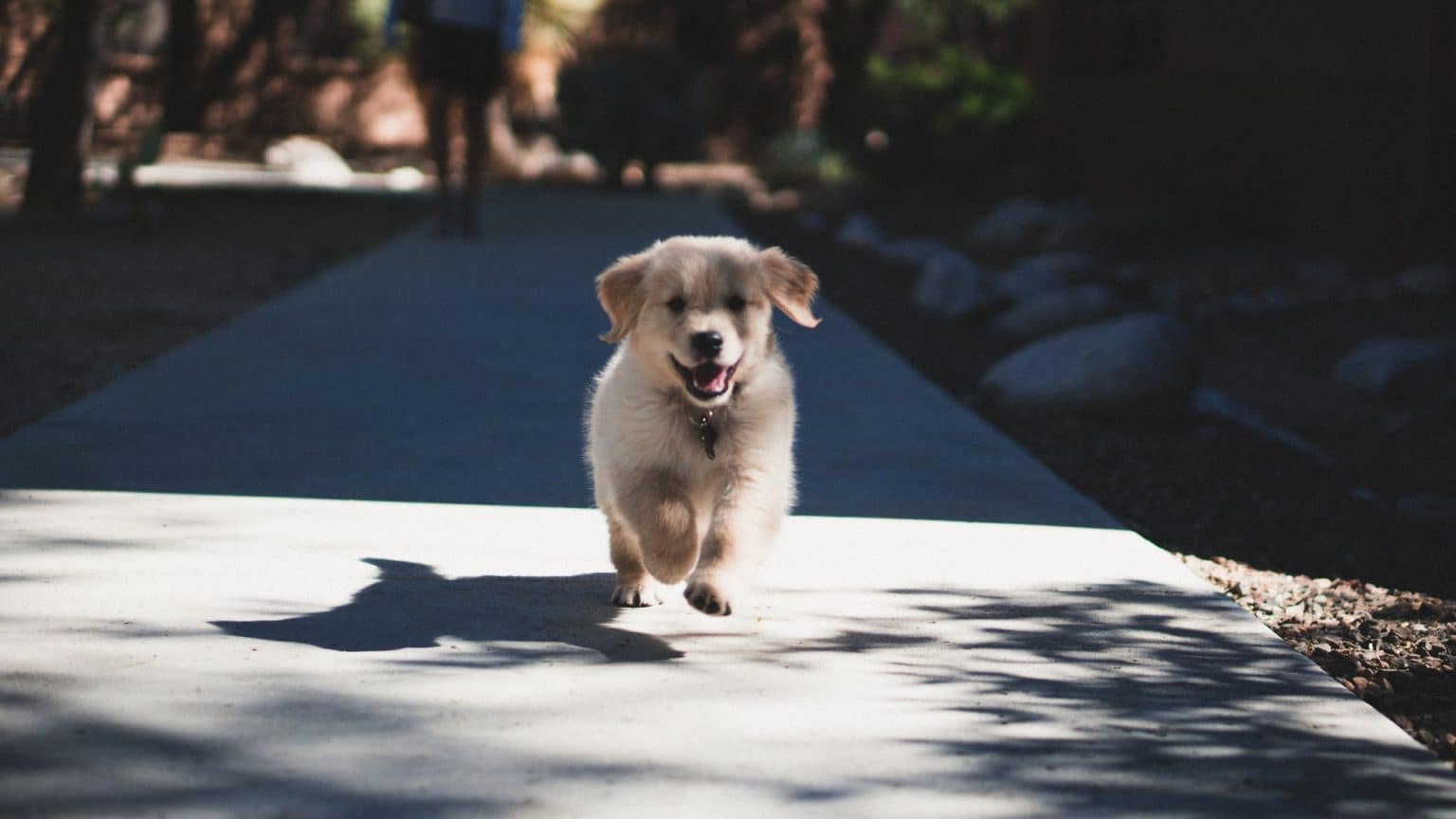Future dog owners have recently been trying to get a new pup home as young as possible, so it has become an ever-growing trend.
The reasons behind the idea are pretty straightforward: it’s easier to train a young puppy than an older dog with well-ingrained habits and personality traits. This way, you can introduce your little ball of fur to healthy habits, your house rules and routine as early as possible.
This begs the question of whether there’s a minimum age or not. There is indeed, for the puppy’s health, mental state and happiness.
In most cases, you shouldn’t get a puppy younger than eight weeks old. Doing so may affect your new pup’s health and social interactions, as it separates them from their mother and littermates before the natural weaning process. Between 8 to 12 weeks is the perfect age to bring a puppy home under normal circumstances.
Of course, not all dogs are born in healthy environments and indeed, age IS just a number. Challenges exist at every age. But in most situations, 8 to 12 weeks minimum is best for the dog and you.
Why 8 to 12 weeks old is the perfect age to get a new dog
You may have wanted one before 8 weeks, but I have good reasons for the advice.
1. The Weaning Process
The weaning process is a puppy’s transition from drinking their mother’s milk as the primary food source to other solid food. It’s an uncomfortable process that starts at 3-5 weeks old and takes some time to get used to. Puppies shouldn’t be separated until weaning is completed.
The weaning process is completed once the doggo can happily eat solid food independently. On the other hand, incomplete weaning can lead to stages of aggression and lack of socialisation leading to behavioural, mental and physical issues in the future.
Often termed as “learning the ways of the world,” puppies between six to twelve weeks begin to socialise and learn about the hierarchy. Allowing your new dog the time to properly socialise will build confidence and help them bond with others.

They develop behaviour and habits from their mother and littermates during this period. The mother will actively and frequently discipline the puppy for bad behaviour. These habits include impulse and anger control. And learning biting inhibition through the reactions of the mother and littermates.
This process is very important as it defines the behaviour of the puppy. In most cases of aggressive behaviour, lack of socialisation is to be blamed for the doggo’s situation. It could also lead to a massive lack of confidence. The pup will be anxious, fearful and intimidated when introduced to new environments.
3. They learn how to be around people and other dogs.
Continuing onto the socialising factor, puppies learn “how to be a dog” during this period. Their mother and littermate would teach how to communicate with other dogs with vocalisations such as barking and growling. They also learn a dog’s body language and various postures.
As for their owners and other people, this is the time when a puppy develops tolerance to touch. Without it, they would bark and grow aggressively even while being petted. This would cause significant health and hygiene problems as the puppy’s fur needs to be checked regularly.
4. It’s Illegal.
Lastly, it’s not only immoral but against the law too. A 2020 study found out that 1 in 4 UK puppies are probably being bought before the minimum recommended age of 56 days (8 weeks) even though it’s prohibited by the law.
In short, do be one of that 25% of dog owners who are taking their puppies away too early.
Correctly following the procedures is crucial for the health of your dog. Some breeders even exceed 10 weeks instead of 8 if they deem the puppy too weak or fragile at the moment of sale.
Read More: What do you need for your puppy coming home? A UK Checklist
Do different breeds have different “right ages”?
Different dog breeds don’t have any difference in the “right age” to bring your doggo home. You should introduce your puppy to its new home at about 8-12weeks of age, be it a Labrador, Doberman, Beagle, Chihuahua, German Shepherd or any other breed.

Is the timing even right for you, the future dog owner?
Getting a new puppy home is honestly super exciting and a huge deal for everyone involved. But when we’re knee-deep in vital research, preparations, and whatnot, we forget to ask the most fundamental question. Is the timing right for you?
Because if you’re not free enough to devote a better part of your day during the first few months, you’re essentially welcoming a poor puppy to an empty home. Don’t forget that dogs are pack pets. They prefer family members around.
You’re supposed to prepare, initiate, and manage a predictable routine for your dog for the first few months. This would help with crate training, potty training and other critical habit-building exercises. You can’t do all that from your workplace.
Ideally, it’s better to get a dog when you’re taking some time off, maybe travelling. You can train your doggo first and then be the best pals on the roads.
Of course, you can always book a sitter if you’re determined to get one. You’ll miss out on some parts, but it’ll be alright if you make time for your puppy. Building a bond between you and your doggo is essential for training.
Another important factor is your financial situation. Adding a new pet home is not as inexpensive as it might sound.
On the contrary, if you’re prepared to spend your time and money training your dog and getting the important stuff from the welcoming checklist, go ahead and get one already!
Read More: Do pets affect working from home productivity?
Is there a best time of the year to get a puppy too?

Now that we’re already on the topic of timing. Is it OK to get puppies all-year-around, or is there a specific time of the year?
Technically, you can buy one any time of the year, but it might not be a good idea.
The summer and spring seasons are the best to bring your new doggo home. You’ll be able to give the pup a warm welcome and maintain a strict (and fun) training schedule without the uncomfortable circumstances during Winter and Fall.
During the Winter and even late Fall, the days are shorter, and nights are darker. It’ll also be pretty cold with either rain or snow bothering you. Put all of that together, and it’s not the best time for training.
Toilet training in the second half is especially a nightmare because neither you nor your dog wishes to go out in the snow. The holiday season will also be upon you, and you’ll be super busy with the preparations.
It’s the time to sit around and have fun with your pets and family, not the time to worry about training and building habits. Socialising, which is super important for puppies, is also difficult during the cold winters.
On the contrary, the Summer and Spring seasons will be warm with long days. Your dog will want to go out on walks and run in the beautiful sunshine. It makes socialising and crate training much easier too.
Best Time to Neuter or Spay Your Pup
Neutering is the surgical procedure where the veterinarian removes your dog’s sexual organs to avoid unwanted pregnancies and related diseases such as mammary, ovarian or testicular cancer.
The right time to neuter a dog depends on several factors, including their current health condition. Depending on your dog’s weight, behaviour, breed, and sex, your vet will likely recommend a time period for neutering different from the standard numbers.
1. What is the best age to get a male puppy spayed (neutered)?
The right age (time) to neuter a healthy male dog is six months (24 weeks) and nine months (36 weeks). Depending on the veterinarian’s advice, some pet owners do it as early as (15-16 weeks) or even much later. It’s important to let your dog develop and reach puberty before spaying.
This is why larger breeds are neutered later than 36 weeks, as it takes time for them to fully develop and reach puberty.
2. What is the best age to get a female puppy spayed (neutered)?
Six months (24 weeks) and nine months (36 weeks) are the two best times to neuter a healthy female dog with no behavioural or weight-related issues. Female dogs should be spayed before their first season or atleast 3 months (12 weeks) after their latest season.
To sum up: do it only if you’re ready. If possible, don’t get a dog before 8 weeks. And consult a vet about neutering.




